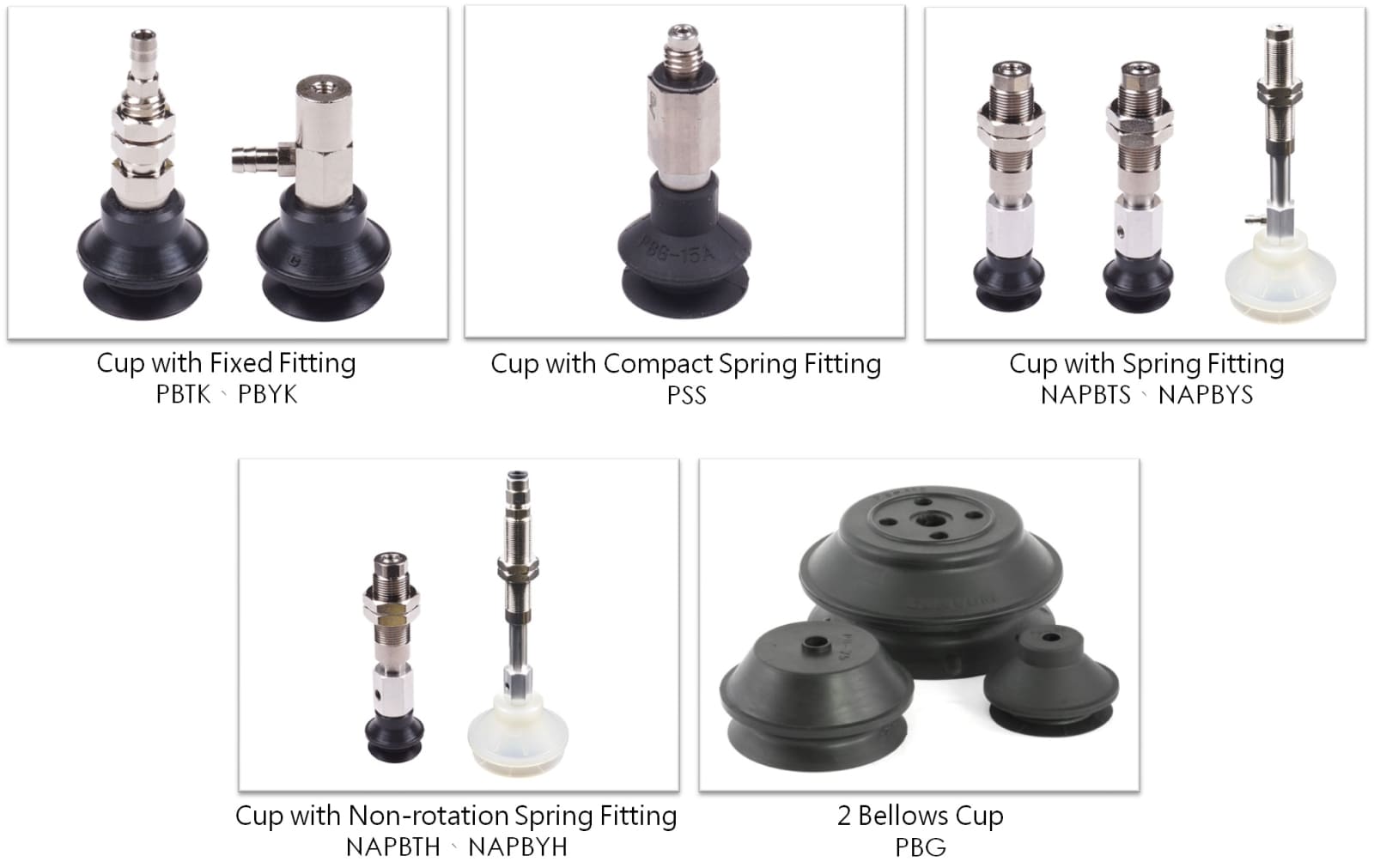

- All Products
- Pneumatic Series
- GENTLE Pneumatic Fittings
- GENTLE Ionizer
- CONVUM Ltd.
- FUJIKURA
- FUJI LATEX Co., Ltd.
- KOGANEI Corporation
- iB series
- Air Cylinders, Hands
- Air Valves
- Air Filters, Regulators, Pressure Gauges
- Flow Rate Sensor Switches, Plachain Ducts, Pressure Switches
- Vacuum Equipment, Pads
- Electric Actuator
- Environmental Hygiene Equipment
- Static Electricity Removal
- Fluororesin Products
- Fixed Discharge Pump
- Medium Control Equipment
- Pulse Blow Series
- NKE Corporation
- TAKEX
- Dispensing Series
- Dual-Bellows Compliance: Multi-pleat bellows add cushioning and stroke to absorb impact and height errors, reducing drops and leakage.
- Adaptation to Uneven/Angled Surfaces: Thin lip plus bellows travel help seal on sloped, curved, and textured faces with stable vacuum.
- Comprehensive Size Range: ø10 / 15 / 20 / 30 / 40 / 50 / 75 / 110 / 150 mm to match contact area, payload, and target cycle time.
- No Extra Damper Required: Built-in compliance suits EOATs with tight envelopes where external shock absorbers can't be added.
- Material Options: N (NBR) for general/oil-resistant use; S (Silicone) is softer and minimizes marking, ideal for mark-sensitive parts and cleaner environments.
- Applications: Carton/packaging logistics, uneven-surface picks in automated assembly, sloped-part handling on robot EOATs, pallet layer separation, curved sheet or formed-part transfer.

Q1: How is PB different from flat pads?
A: The bellows provide cushioning and stroke, improving sealing on angled or uneven surfaces and reducing leakage and dropped parts.
Q2: What sizes are available?
A: ø10–150 mm. Select by effective contact area, workpiece mass, and intended cycle time.
Q3: Do I need external shock absorbers?
A: Typically no—the bellows offer intrinsic compliance. Consider external damping only for unusually high impacts.
Q4: How can I improve sealing on sloped or curved parts?
A: Upsize the pad for more contact area, keep surfaces clean, tune vacuum flow/throttling, and avoid lateral pulling.
Q5: How do I choose between N and S materials?
A: N (NBR) provides general utility and oil resistance; S (Silicone) is softer and minimizes marking, suitable for mark-sensitive parts and cleaner environments.
Q6: Will bellows pads slow high-speed pick-and-place?
A: The stroke aids compliance, but for very short cycle times validate rebound and sealing stability; adjust pad size and vacuum settings as needed.
Q7: Are PB pads compatible with my existing tooling?
A: Usually yes—verify thread/interface type, available stroke/space, and pad OD. Run a small on-tool trial when in doubt.
Q8: How do I decide maintenance or replacement intervals?
A: Inspect for lip wear, hardening, or cracks. Replace when sealing degrades or drop rate increases.
Q9: Any tips for dusty or rough surfaces?
A: Clean the contact area, consider the softer S material, increase flow, and upsize the pad to improve coverage and sealing.
Q10: Can PB handle heavier parts?
A: Yes, if total suction force (with safety margin) meets mass/acceleration demands; distribute load using multiple pads as needed.





